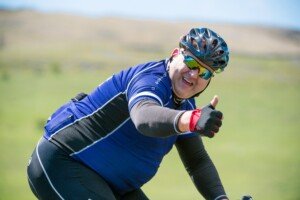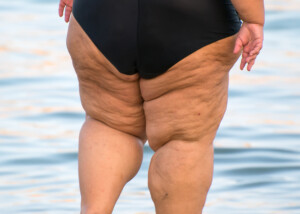
Many obese people insist that they exercise as much as any lean person.
About 80 percent of personal-training clients are overweight women.
But the truth is, the percentage of clinically obese individuals at health clubs or parks (on the walking/jogging/biking/inline skating paths) is drastically lower than the percentage in general areas such as malls, festivals, busy streets, business centers, ball games, concert halls, etc.
Visit any place where people are exercising or getting in physical activity. You will see few people who are significantly overweight.
This isn’t because the very overweight can’t perform the exercise or activity.
I don’t expect to find very heavy people skateboarding, but I’m talking about more practical activities like walking, slow jogging, basketball, tennis. And of course, working out with weights.
An issue of the Journal of Nutrition Education and Behavior (Jan/Feb 2010) delves into the strange paradox:
The solution to obesity and its accompanying hazards is exercise (along with smart eating habits), yet, most obese U.S. people do not have a structured, comprehensive approach to exercise.
First, let’s define exercise.
The shopping you did at Kohl’s or Walmart does not comprise your exercise regimen for the day.
Nor does housework. And leisurely walking your Pomeranian around the block a few times doesn’t count, either.
Exercise that works is that which keeps the heart rate elevated for at least 20 minutes nonstop.

If housework keeps your heart rate elevated, this means you’re in poor condition and need to perform structured cardio routines (treadmill, outdoor arm-pumping walking, step class, elliptical machine, staircase machine, cycling).
And a program also of strength training will make housework less fatiguing.

Shutterstock/Artem Postoev
The variable for the obese individual is making time for deliberate, structured, bilateral, neutral-spine-positioned cardio and strength training workouts, regardless of how much “walking” you did at the mall that day, or how much hassling you did carrying around your toddlers that day.
RESEARCH
Researchers at The George Washington University Medical Center analyzed survey results from 1,552 people, of whom 989 were overweight.
Some results: Overweight people believed that exercise enhanced self-image and appearance more so than normal weight subjects.
Overweight participants felt more intimidated and self-conscious about exercise (under most circumstances) than non-overweight people.
And the negative emotions that go with the health club experience may be greater in obese people when it comes to dictating the decision to exercise.
The study authors note that “…it would be wise for exercise professionals and commercial health clubs to help OW people feel more comfortable around those who are different from themselves and to minimize the intimidating aspects of the exercise environment, while promoting the benefits of exercise to personal health and wellbeing.”
It is no secret that many obese and even moderately overweight people won’t exercise at gyms due to self-consciousness.
However, exercise can begin inside the comfort of the house. Fancy, noisy, space-consuming equipment is not necessary.
If you’re obese and not working out, you can start with a used stationary bike for $25, and used treadmills are pretty cheap, if money is an issue.
Or exercise to cable channel fitness programs, or purchase some exercise CDs. You can even follow YouTube workouts.
Though the percentage of obese people who exercise at gyms is way smaller than the percentage of very heavy people in the general population, I’d have to say that enough overweight women and men show up at health clubs to conclude that self-consciousness and intimidation obviously don’t stop these particular individuals from doing what’s right for their body.
 Lorra Garrick is a former personal trainer certified through the American Council on Exercise. At Bally Total Fitness she trained women and men of all ages for fat loss, muscle building, fitness and improved health.
Lorra Garrick is a former personal trainer certified through the American Council on Exercise. At Bally Total Fitness she trained women and men of all ages for fat loss, muscle building, fitness and improved health.
.


























